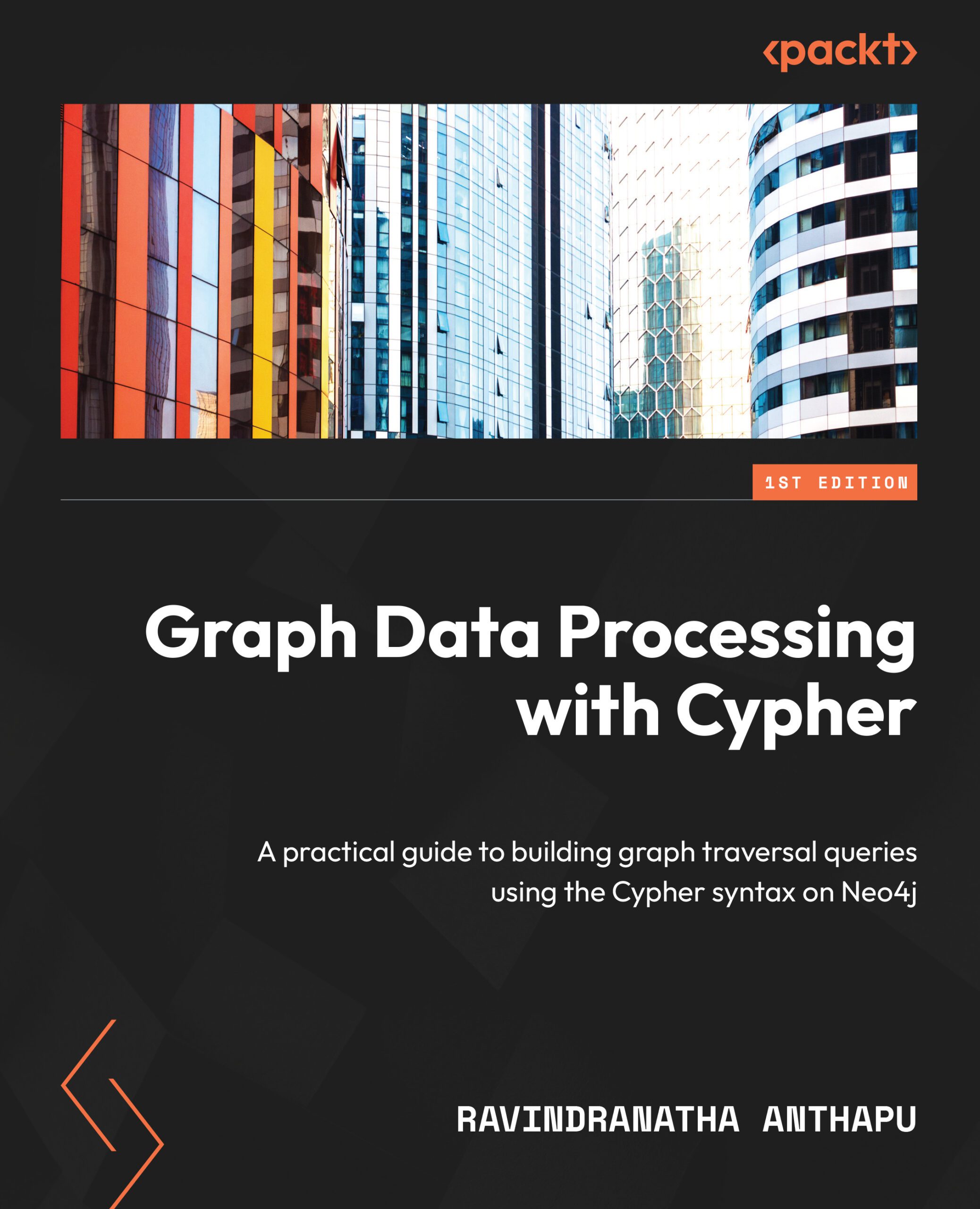Ravindranatha Anthapu is the author of Graph Data Processing with Cypher, we got the chance to sit down with him and find out more about his experience of writing with Packt.
Q: What is/are your specialist tech area(s)?
Ravi: Graph Databases, Data Engineering, Machine Learning, Spring Data, Neo4j, Cloud (AWS, Azure, GCP), Java, C#
Q: How did you become an author for Packt? Tell us about your journey. What was your motivation for writing this book?
Ravi: I was reached out by Packt if I’m interested in writing a book on Cypher. I have been helping customers with adopting Neo4j as a Principal Consultant and I saw the need for a guide for developers to be able to successfully adapt to graph databases and Cypher query language. Last book that was written was 7 years and there was nothing that could guide the developers beyond the neo4j manuals. I felt having a book that guides a developer through various topics from data modeling to learning to use various capabilities Cypher would be a good thing.
Q: What kind of research did you do, and how long did you spend researching before beginning the book?
Ravi: I looked at how to guide the developers in a way it is easy to follow from beginners to aspects of tips for seasoned developers. It took a month before I could start writing the book.
Q: Did you face any challenges during the writing process? How did you overcome them?
Ravi: Being the first book written it took some time to get into groove and understand how to present the content. Packt team were patient enough to get me on right track for the first few chapters and after that things were good.
Q: What’s your take on the technologies discussed in the book? Where do you see these technologies heading in the future?
Ravi: Graph Databases are on the cusp of growing big. There is a large adoption happening right now across various domains. Cypher also being adapted as a query language for multiple competing graph databases. This shows how Cypher is good at representing graph traversals. We might get more capabilities added to Cypher to do more complex graph analytics as part of core capabilities, which are being served as extensions at this time.
Q: Why should readers choose this book over others already on the market? How would you differentiate your book from its competition?
Ravi: There are no books available right now to guide the developers to learn Cypher fro basics to advanced. There is a huge amount of documentation from Neo4j, but it doesn’t guide the developers and they can get confused with the content. There is free training available, but that only covers few simple examples, and does not cover all the aspects of Cypher. This book tries to address that limitation.
Q: What are the key takeaways you want readers to come away with from the book?
Ravi: Good understanding of Cypher and Graph databases and knowledge to build optimal graph queries
Q. What advice would you give to readers learning tech? Do you have any top tips?
Ravi: Cypher execution is best for traversals. So, developer should understand how to model the data for better traversals, rather than depending on property based filters all the time. Also, if a node has more than 10 properties, most likely the model is mimicking the RDBMS and the performance can degrade as the data size grows.
Q. Can you share any blogs, websites, and forums to help readers gain a holistic view of the tech they are learning?
Ravi: https://www.neo4j.com/docs, https://community.neo4j.com
Q. How would you describe your author journey with Packt? Would you recommend Packt to aspiring authors?
Ravi: It’s been an interesting one. It’s like journey into the graph databases. It is familiar journey yet so different. I have been advising customers with graph adoption a lot. But, when it comes to writing a book, while I am trying to convey the similar information, but how I can deliver it so different. I would say take a step back and look at how a developer would like to look at the content if it was you reading the book.
Q. Do you belong to any tech community groups?
Ravi: Neo4j Community
Q. What are your favorite tech journals? How do you keep yourself up to date on tech?
Ravi: ArsTechnica, Wired
Q. How did you organize, plan, and prioritize your work and write the book?
Ravi: It took some serious effort to organize my time, as there were some busy times that I couldn’t concentrate on writing book. Some times I had to take a step back and re-organize the chapter as the flow was missing due to breaks. But, in the end looking at each chapter is a different perspective and guidance from Packt team helped to make it a reality.
Q. Would you like to share your social handles? If so, please share.
Ravi: https://www.linkedin.com/in/ravindranatha-anthapu/
You can find Ravi‘s book on Amazon by following this link: Please click here

Graph Data Processing with Cypher – Available on Amazon.com








